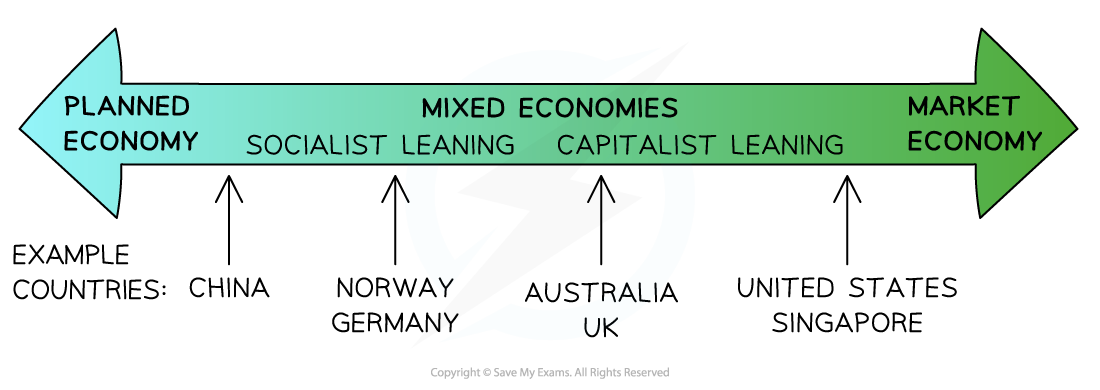Syllabus Edition
First teaching 2025
First exams 2027
Understanding the Mixed Economic System (Cambridge (CIE) IGCSE Economics): Revision Note
Exam code: 0455 & 0987
Characteristics of a mixed economic system
Any economic system needs to decide how to answer the three fundamental economic questions
What to produce? More weapons for the military or more schools to educate children?
Who to produce for? Only those who can afford to pay for it? Or for everyone in society?
How to produce it? Should more labour be used, or should the economy focus on using technology instead?
A mixed economic system is a blend of a market and planned economy
Individuals, firms and the government own factors of production and distribute goods or services
In reality, almost every country in the world operates as a mixed economic system
Some countries have more government intervention than others
e.g. China has more intervention than the USA
The higher the level of government intervention, the more the economy will lean towards operating like a planned economy
Why do governments intervene?

To correct market failure
In many markets there is a less than optimal allocation of resources from society's point of view
In maximising their self-interest, firms and individuals will not self-correct this misallocation of resources and there is a role for the government
Governments often achieve this by influencing the level of production or consumption
To earn government revenue
Governments need money to provide essential services and public and merit goods
Revenue is raised through intervention such as taxation, privatisation, sale of licenses (e.g. 5G licenses), and the sale of goods/services
To promote equity
To reduce the opportunity gap between the rich and poor
To support firms
In a global economy, governments choose to support key industries to help them remain competitive
To support poorer households
Poverty has multiple impacts on both the individual and the economy
Intervention seeks to redistribute income (tax the rich and give to the poor) so as to reduce the impact of poverty
Arguments for and against the mixed economic system
The majority of economies in the world operate as a mixed economic system
The extent to which they are mixed varies
Some lean more towards the free market
Other lean more towards a planned economy

North Korea is a planned economy
The United States, Japan and Singapore are mixed economies but have less government intervention than Norway, Germany or China
Evaluating mixed economies
Advantages | Disadvantages |
|---|---|
|
|

Unlock more, it's free!
Did this page help you?